Many Thousands of People are Being Injured and Killed at Work
Many, many good, safety professionals are working to maintain and improve workplace safety. Yet the number of people losing their lives in our workplaces (in just 4 years) has increased from 4,836 in 2015 to 5,333 in 2019, based on the Bureau of Labor Statistics. From 2015 through 2019 there have been 25,746 people who have lost their lives at work. To put this into an alarming perspective, compare this to the losses in Afghanistan since 2001 (over twenty years) where there have been 3,592 allied forces who have been killed, based on Associated Press.
With all the effort put into improving safety performance in our workplaces, why have we not seen a reduction in the number of people being killed at work? New papers sharing improved ways to ‘improve workplace safety’ are presented at safety conferences by the American Society of Safety Professionals, the American Institute of Chemical Engineers’ Global Congress on Process Safety, and many smaller conferences as well as in publications in a variety of journals. The informational know-how is available!
Each of the specialties of occupational safety, occupational health and process safety management have a huge amount of information that has been developed over the years to improve safety performance. While some progress has been made in reducing the total number of injuries from a rate of 3.0 in 2015 to 2.8 in 2019 (2,814,000 injuries) this seems slow to me.
What is Missing?
The fruits of all this work has to be carried out by the people actually doing the physical work, those close to the actual operating and maintenance processes. We need to help these people, and not just pile more stuff onto them.
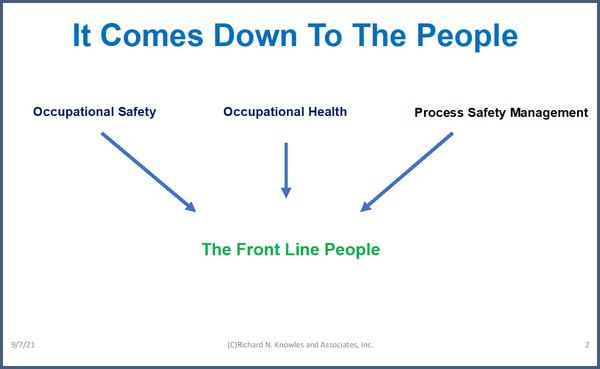
I have found in all my 60 years in working in research, production and consulting globally that a missing link is not talking with the front-line people and exploring and learning together how to improve the work so that fewer injuries and incidents occur. None of us have all the answers. We need each other. (Talking down to people doesn’t work; talking to people (one-way) doesn’t work—the key is in talking with our people!)
Here is a Simple Solution…
When I was the Plant Manager at the 1,300 person, DuPont Belle, WV Chemical Plant I changed this. In my leading process, I spent 4-5 hours a day for 7+years walking around in the Plant, being respectful, sharing information, listening, asking how I could help the people, asking them for their help, learning together to improve things and building trust and interdependence. I talked with everyone. My mantra was “I do not have a right to make my living at a place where it is okay for you to get hurt, and we have to make a living, so let’s figure this out together.”
Our injury rate dropped by about 97% in three years, emissions to the environment dropped by about 96% in 4 years, productivity rose about 45% and earnings rose about 300%. Safety is connected to everything so as we made safety improvements everything else improved. In this approach which I call “Partner-Centered Leadership”, all parts of our safety work came together as shown here.
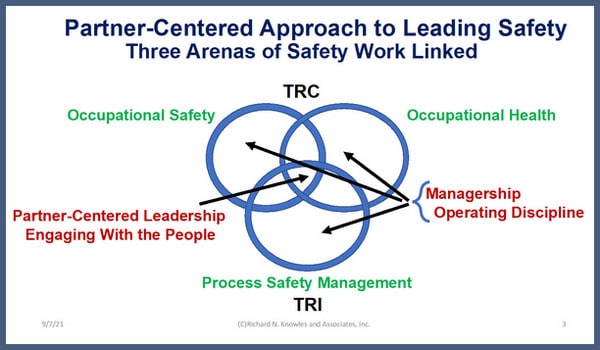
Each of occupational safety, health and process safety have their unique knowledge and management disciplines. When they are brought together, in the region of overlap in the center of this Venn Diagram, this is where the people and the leading process described above come together. In addition to talking with everyone about all the dimensions of our safety work as I walked around, there was one place where this all came together and was clear to everyone. Our monthly Central Safety Meetings were open, and all aspects of our safety work were discussed openly with everyone. All questions and concerns were welcome, and fixed. I strongly urged our supervisors to talk with their people and the engineers to sit with the operators to teach them the elements of process safety.
This is Simple.
Go into your workplaces, respectfully talk with the people, listen, share, ask them where you can be of more help, help them to follow up on their ideas and concerns, solve problems, build trust, and have everyone go home healthy and in one piece. Engagement!
You can do this!
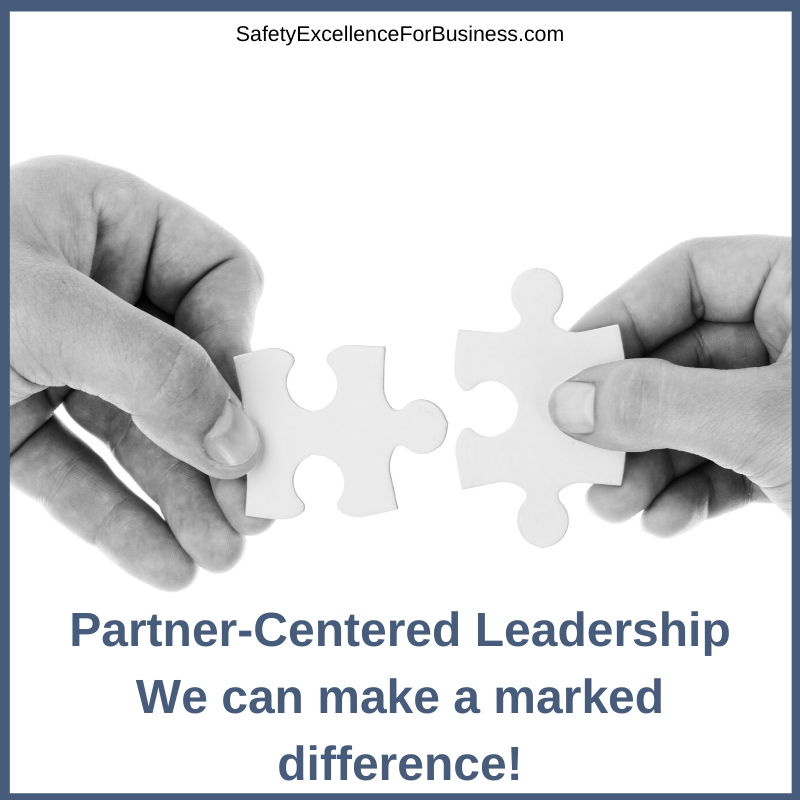
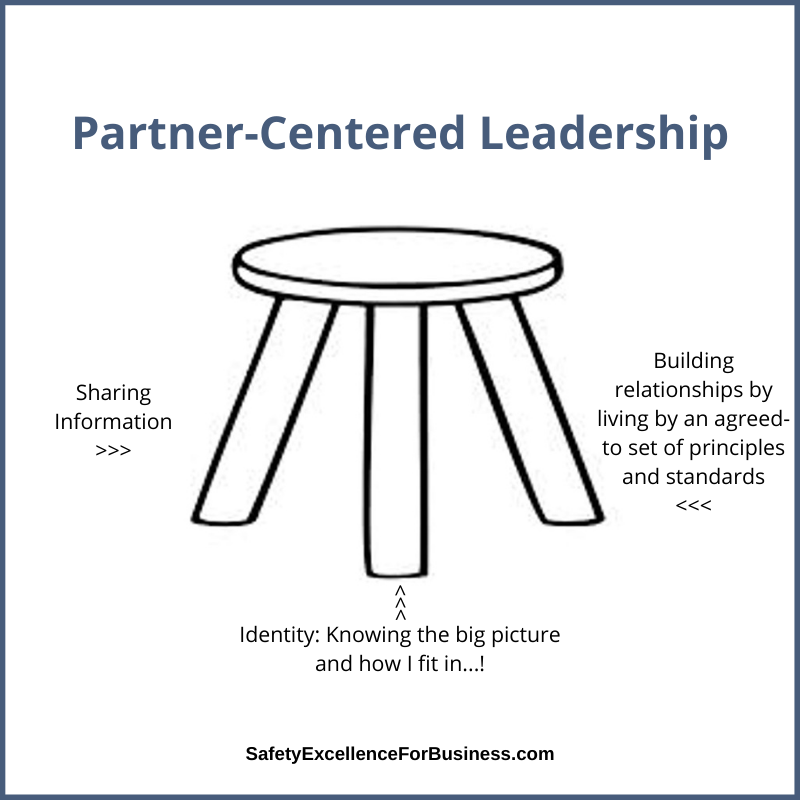
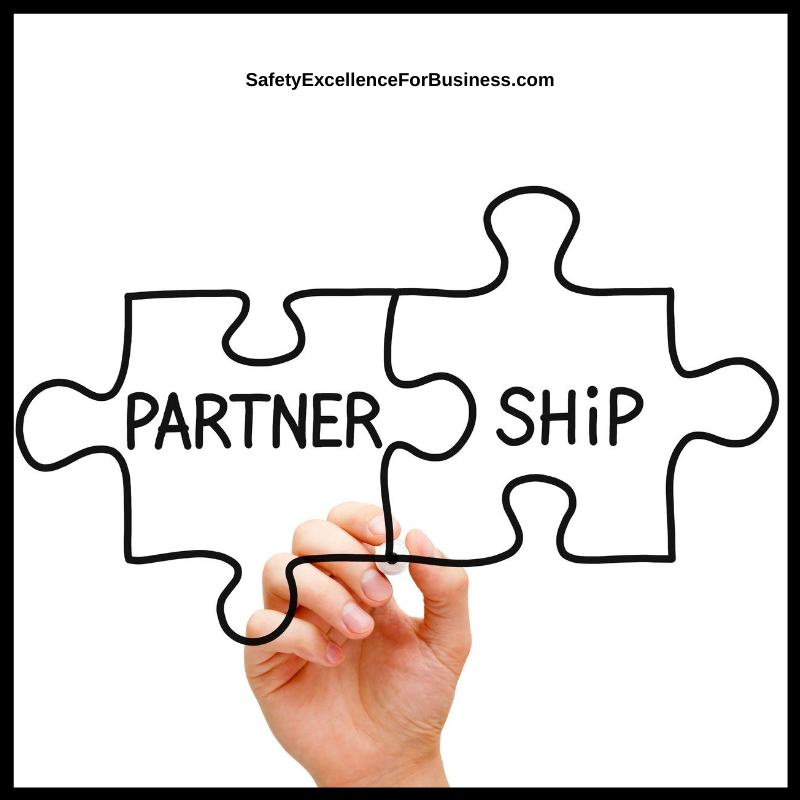 When I was transferred to the DuPont Belle, West Virginia plant in 1987, the Total Recordable Injury Case Rate (TRC) was about 5.8 and emissions to air, water and ground, as reported in the EPA Toxic Release Inventory (TRI) annual report, was over 6,000,000 pounds/year. Within three years, both of these had dropped by about 95% to a TRC of about 0.3 and a TRI of about 275,000 pounds/year. Emissions to the environment is one way to measure how well the process safety is working; the better the process safety work, the lower the emissions to the environment.
When I was transferred to the DuPont Belle, West Virginia plant in 1987, the Total Recordable Injury Case Rate (TRC) was about 5.8 and emissions to air, water and ground, as reported in the EPA Toxic Release Inventory (TRI) annual report, was over 6,000,000 pounds/year. Within three years, both of these had dropped by about 95% to a TRC of about 0.3 and a TRI of about 275,000 pounds/year. Emissions to the environment is one way to measure how well the process safety is working; the better the process safety work, the lower the emissions to the environment.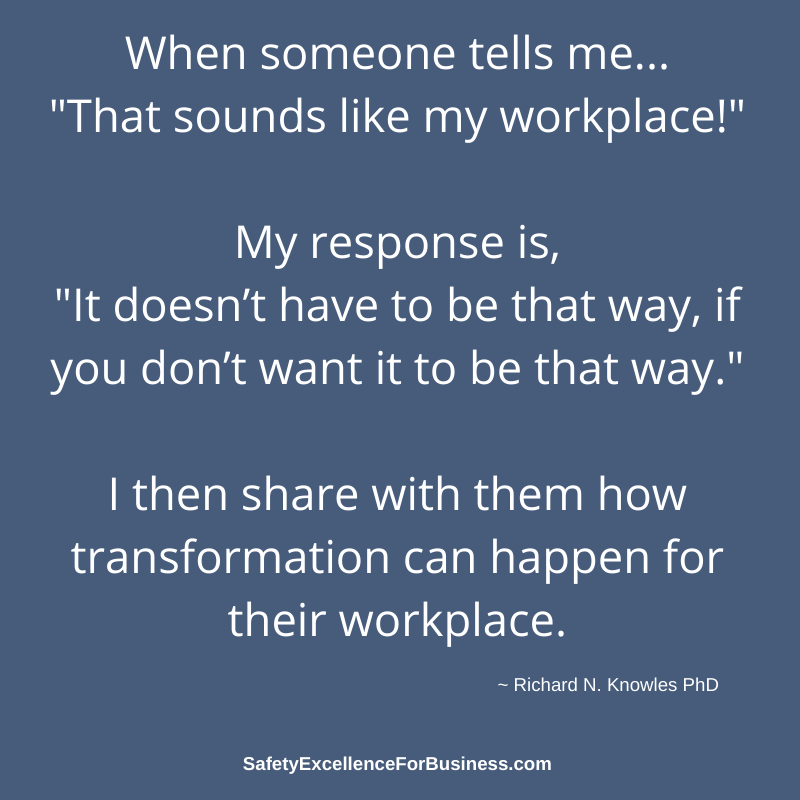 The process safety management collapsed in January of 2010 with major, accidental releases to the air and river and they had a man get killed with a phosgene release. When the US Chemical Safety Board investigated in late 2010, they reported that while the occupational safety and health performance was the best in the DuPont Company, the process safety management had fallen apart and the plant was not even using the DuPont standard procedures. This was a sad commentary about how far things had fallen.
The process safety management collapsed in January of 2010 with major, accidental releases to the air and river and they had a man get killed with a phosgene release. When the US Chemical Safety Board investigated in late 2010, they reported that while the occupational safety and health performance was the best in the DuPont Company, the process safety management had fallen apart and the plant was not even using the DuPont standard procedures. This was a sad commentary about how far things had fallen. Our businesses, our schools and hospitals, our governments, and not-for-profits, at all levels, are fractured and coming apart. Change is coming faster and faster. So many people seem to be trying to cope by pulling into their shells and trying to push the turmoil all away. The trust levels among all the various groups is very low. So many loud voices are pushing their version of the “truth” that it is almost impossible to tell who is being honest and should be listened to. How do we find the truth?
Our businesses, our schools and hospitals, our governments, and not-for-profits, at all levels, are fractured and coming apart. Change is coming faster and faster. So many people seem to be trying to cope by pulling into their shells and trying to push the turmoil all away. The trust levels among all the various groups is very low. So many loud voices are pushing their version of the “truth” that it is almost impossible to tell who is being honest and should be listened to. How do we find the truth?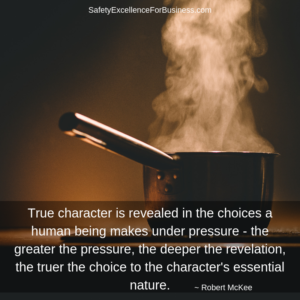 In thinking about your own place of work, what do you suppose it would be like if people did some of the things mentioned earlier in this newsletter? Do you think that you could begin talking with others about building a more respectful environment? What do you think it would be like if you could openly talk together about the important issues like improving the safety of your job? What would it be like if the managers and supervisors talked frequently about with everyone about how the business was doing the challenges from the competition? What would it be like if you knew that someone was looking out for your back? What would it be like if you felt you were in an environment of trust? What would it be like if people really asked important questions and talked about them? What would it be like if people in upper management asked you for your honest opinion and really listened? That’s called breaking the iceberg and engaging in authentic conversations!
In thinking about your own place of work, what do you suppose it would be like if people did some of the things mentioned earlier in this newsletter? Do you think that you could begin talking with others about building a more respectful environment? What do you think it would be like if you could openly talk together about the important issues like improving the safety of your job? What would it be like if the managers and supervisors talked frequently about with everyone about how the business was doing the challenges from the competition? What would it be like if you knew that someone was looking out for your back? What would it be like if you felt you were in an environment of trust? What would it be like if people really asked important questions and talked about them? What would it be like if people in upper management asked you for your honest opinion and really listened? That’s called breaking the iceberg and engaging in authentic conversations!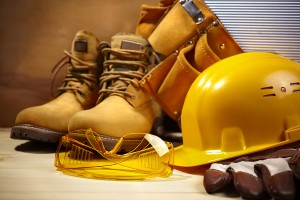 I feel we are not moving fast enough to get to higher levels of performance. Way too many people are getting hurt and killed. Safety is a part of all we are doing and the whole system needs to be making improvements.
I feel we are not moving fast enough to get to higher levels of performance. Way too many people are getting hurt and killed. Safety is a part of all we are doing and the whole system needs to be making improvements.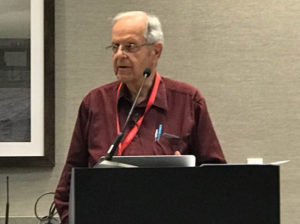 I was given the opportunity to talk about my work on Partner-Centered Leadership and shared information about the Process Enneagram, which is such a powerful tool to help people to come together to solve their complex problems. Partner-Centered Leadership is focused on sharing information, building trust and interdependence, helping everyone see the importance of their work for the success of the whole enterprise and moving into a better future. Everyone at the workshop was seeking ways to actually move into Safety II and make it happen so there was a lot of interest in this work.
I was given the opportunity to talk about my work on Partner-Centered Leadership and shared information about the Process Enneagram, which is such a powerful tool to help people to come together to solve their complex problems. Partner-Centered Leadership is focused on sharing information, building trust and interdependence, helping everyone see the importance of their work for the success of the whole enterprise and moving into a better future. Everyone at the workshop was seeking ways to actually move into Safety II and make it happen so there was a lot of interest in this work. Leaders are people who have a vision of what is possible, are concerned and care enough to make a difference, have the courage and commitment to do the work, and truly engage with people to learn, grow and to achieve their results. These are people who regularly go into their organizations, walk around, have the important conversations about getting better, building a respectful workplace, listening carefully, building trust and interdependence, and helping the people to be the best they can be. They create environments where it is safe to openly talk together, ask questions, share information, think out-loud and build a better future.
Leaders are people who have a vision of what is possible, are concerned and care enough to make a difference, have the courage and commitment to do the work, and truly engage with people to learn, grow and to achieve their results. These are people who regularly go into their organizations, walk around, have the important conversations about getting better, building a respectful workplace, listening carefully, building trust and interdependence, and helping the people to be the best they can be. They create environments where it is safe to openly talk together, ask questions, share information, think out-loud and build a better future. Lots of managers talk about the need for organizations to change and improve. But as I talk with people, go to conferences and read the safety literature, I hardly ever encounter anyone leading this way. So many managers do not know what it means to lead.
Lots of managers talk about the need for organizations to change and improve. But as I talk with people, go to conferences and read the safety literature, I hardly ever encounter anyone leading this way. So many managers do not know what it means to lead.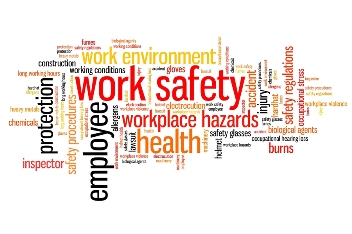 Todd Conklin works with companies to help them recover and begin to heal after they have experienced a fatality in their workforce. He has come up with a different, creative way to look why the number of fatalities at work has remained at about 4,700 people a year for a number of years. Our programs of focusing on accident prevention have significantly reduced the total number of recordable injuries, but they have not had much impact on reducing the number of fatalities.
Todd Conklin works with companies to help them recover and begin to heal after they have experienced a fatality in their workforce. He has come up with a different, creative way to look why the number of fatalities at work has remained at about 4,700 people a year for a number of years. Our programs of focusing on accident prevention have significantly reduced the total number of recordable injuries, but they have not had much impact on reducing the number of fatalities. I just saw an announcement that the Liberty Mutual Research Institute for Safety was closing after 59 years, to reduce costs. The ISO 45001 Standard is in the final stages and is aimed at improving safety around the world. Yet some people are reacting that it will not make a difference because of management indifference or cost restraints.
I just saw an announcement that the Liberty Mutual Research Institute for Safety was closing after 59 years, to reduce costs. The ISO 45001 Standard is in the final stages and is aimed at improving safety around the world. Yet some people are reacting that it will not make a difference because of management indifference or cost restraints. Many of you who have been reading this newsletter know that our emphasis is on Partner Centered Leadership. We emphasize the importance of supervisors and managers getting into their workplaces each day and talking with the people. Talking with the people is a key to breaking through to safety excellence. Talking about the risks they face each day, how they are managing them, how their kids are doing, how the safety is doing, how the business is doing, asking them what they see as to ways to improve their own work, asking about problems they are dealing with, etc. Doing this with respect and really listening are vitally important.
Many of you who have been reading this newsletter know that our emphasis is on Partner Centered Leadership. We emphasize the importance of supervisors and managers getting into their workplaces each day and talking with the people. Talking with the people is a key to breaking through to safety excellence. Talking about the risks they face each day, how they are managing them, how their kids are doing, how the safety is doing, how the business is doing, asking them what they see as to ways to improve their own work, asking about problems they are dealing with, etc. Doing this with respect and really listening are vitally important.
 As the snow begins to melt and the spring winds arrive, it is time for cleaning up the place. Mud season is upon us as the snow melts. All sorts of curious things emerge from the melting piles of snow; stuff that was covered up and lost. (Just imagine: Years ago the settlers kept their animals sheltered next to their houses or barns attached to their houses so that they could care for them when the winter cold set in. They really had to do the spring-cleaning!)
As the snow begins to melt and the spring winds arrive, it is time for cleaning up the place. Mud season is upon us as the snow melts. All sorts of curious things emerge from the melting piles of snow; stuff that was covered up and lost. (Just imagine: Years ago the settlers kept their animals sheltered next to their houses or barns attached to their houses so that they could care for them when the winter cold set in. They really had to do the spring-cleaning!)





